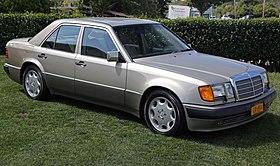| Source: porsche.com/italy/models/911/911-r/ |
With the same 4 litre naturally aspirated flat-six derived from the track-going GT3 RS slung out at the back, your insatiable desire for tactile pleasure of feeling the cogs stirring under your palm, the 911 R will surely stroke your insistence for 'manualness' (do the word even exist?).
| Source: porsche.com/italy/models/911/911-r/ |
"It's a unique selling proposition for Porsche to have a manual in the 911 range, and I think we will fight for that as long as possible," he told Car And Driver. "Even if it's only 10 percent of the market, it's important for some customers and for some markets, especially the U.S., to have that kind of gearbox."
He also acknowledges the emotional appeal of flicking the gear lever.
"What we learned from the last two years with the Cayman GT4 and Boxster Spyder is that it's not only a discussion of lap times, but also of emotion, of being fun to drive," he said. "Even if the car is not the fastest, it is fun to drive with a manual. Of course the PDK is faster, but a lot of customers want to change gear by themselves. Therefore I think we should keep it, for the next generation also."
The 911 R is a sign of Porsche's dedication to keep manual in the 911 family as long as a sizeable number of customers ask for it.
Features treating future 911 R owners are automatic rev matching function which can be switched off by a press of a button and an optional single mass flywheel for extra zing when you gun the loud pedal.
Rear wheel steering and mechanical rear locking differential will ensure enhanced stability while you are busy heel toeing to gratification.
To keep 500 hp in check, Porsche Ceramic Composite Brake is standard for an eye-popping stopping power. With lap time not prioritised, the rear wing had been hacked off.
Features treating future 911 R owners are automatic rev matching function which can be switched off by a press of a button and an optional single mass flywheel for extra zing when you gun the loud pedal.
Rear wheel steering and mechanical rear locking differential will ensure enhanced stability while you are busy heel toeing to gratification.
To keep 500 hp in check, Porsche Ceramic Composite Brake is standard for an eye-popping stopping power. With lap time not prioritised, the rear wing had been hacked off.
Unlike certain automakers who had completely threw manual into the dumpster (Ferrari and Lamborghini comes to mind), Porsche has not completely given up on the row-your-own-gear option. The 911 R may well be a ray of hope for the manualphiles around the globe that the surge of the state-of-the-art, lap time 'special' automated transmission will not completely supplant the traditional tactility that 3 pedals and H-gate shifter provide to those who do not see clutching in and out as a humdrum chore.







